Calley Steel, MA RYT-200, Primary Therapist, Eating Recovery Program
What is “normal” eating anyway? In a culture where food is essential not only to our physical well-being, but also to our emotional connections, where is the line between emotional eating and normal eating? And, when does emotional eating become disordered?

These are questions that most people in modern-day America would struggle to answer, but for someone with an eating disorder, these questions are engulfed in shame, comparison, and self-judgment. Even just trying to answer the question or imagine what “normal” eating might look like, can be a shaming experience for a person with an eating disorder, particularly when asked to then move away from the disordered pattern of eating toward something a group of professionals or loved ones are telling him or her is “normal.” Eating disorders are coping mechanisms we develop for protection and comfort; however, they ultimately backfire, destroying our values and the people we strive to become. While these patterns are damaging, we have to acknowledge how they have been used as a means for coping in order to begin to change them and establish a lifetime of recovery.
Our approach to nourishment is a metaphor for our approach to life. Boundary violations in relationships show up in our food choices. We may eat too little and restrict our presence in the world when our boundaries are violated, and we may not be aware of the boundaries of others. Or, we may overeat and demonstrate insatiable hunger in life and addictive behavioral patterns in response to boundary violations. When we’re not in touch with our own boundaries around food and relationships, we may not respect the boundaries of others, which can contribute to unhealthy relationships – including with ourselves. We may make ourselves physically smaller or physically larger to feel safer in the world. We use body image to express our emotions when we don’t have healthy tools for expression. When looking at patterns of disordered eating or struggles with body image, we must recognize that these issues are about much more than food. Eating disorders are a metaphor for a greater struggle, and we have to talk about the food in order to understand and heal the struggle.
We use disordered eating patterns and unhealthy exercise practices to numb, cope, hide, protect, lessen our fear of judgment, and avoid being connected to ourselves. These coping mechanisms work for a while, but eventually they destroy us physically, emotionally, and spiritually. When we use the symptoms of an eating disorder to cope with our fear of being disconnected from others, we essentially keep others out and create a self-fulfilling prophecy. This coping mechanism has dangerous side effects not only on our bodies, but on our minds, spirits, and relationships as well. J.K. Rowling spoke eloquently through the wise words of Albus Dumbledore, who said that “numbing the pain for a while will make it worse when you finally feel it.”
Making the choice to finally acknowledge that our relationship with food is unhealthy may be one of the bravest and most courageous decisions a person can make. So much of our culture (be it media, social circles, or family dynamics) perpetuates shame around food. Shame begets secrets and isolation that act as fuel for disordered and addictive patterns around food and exercise. Breaking that pattern and our silence around this struggle is a difficult choice, but ultimately one that can set us free.
Thankfully, with support, there is tremendous hope for recovery from an eating disorder. Exploring this challenging topic with the right people can be difficult, but it’s worth it to regain compassion and connection with oneself and to rebuild this amazingly important relationship with food.
So what is “normal” eating? Perhaps the answer is that each of us must define our own normal, but in the end, normal eating is free of judgment, shame, and blame. Normal eating allows for self-love, self-compassion, freedom, and connection.













